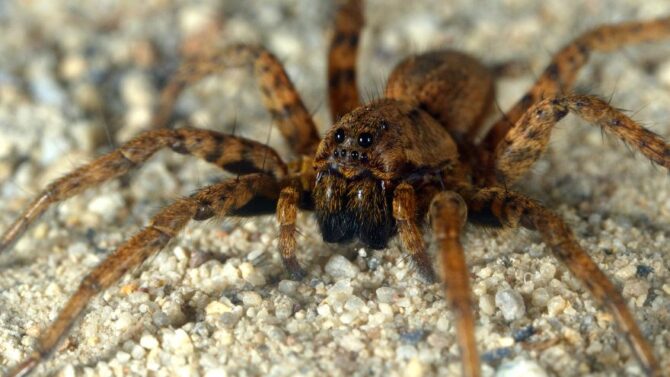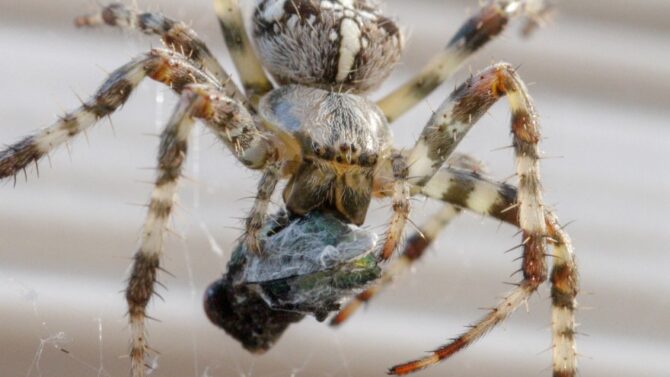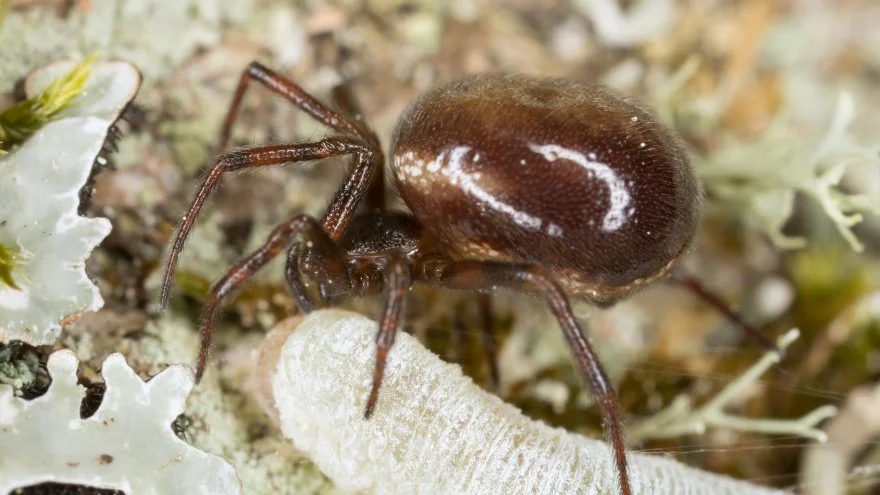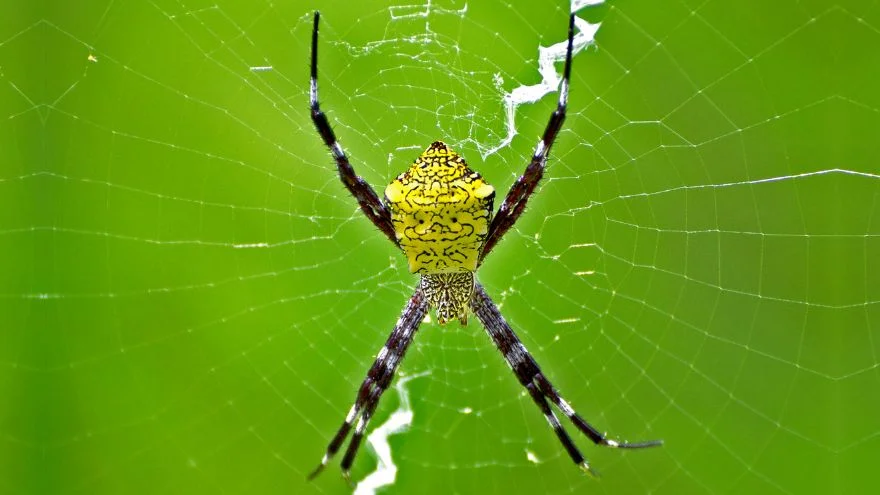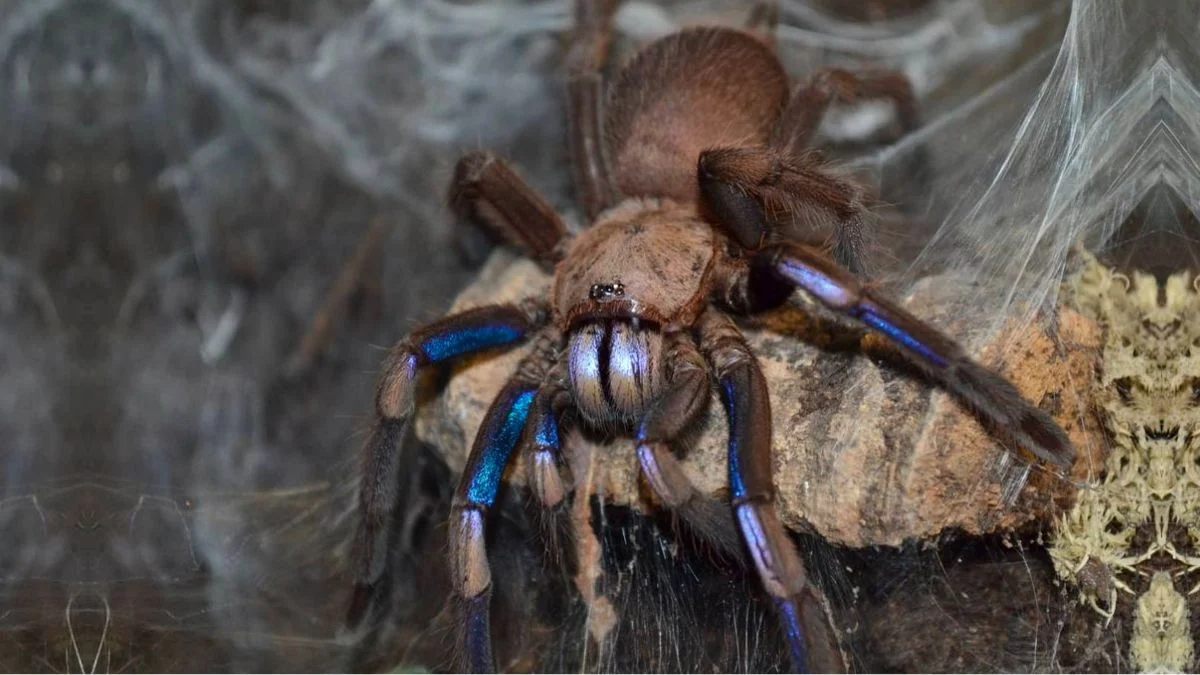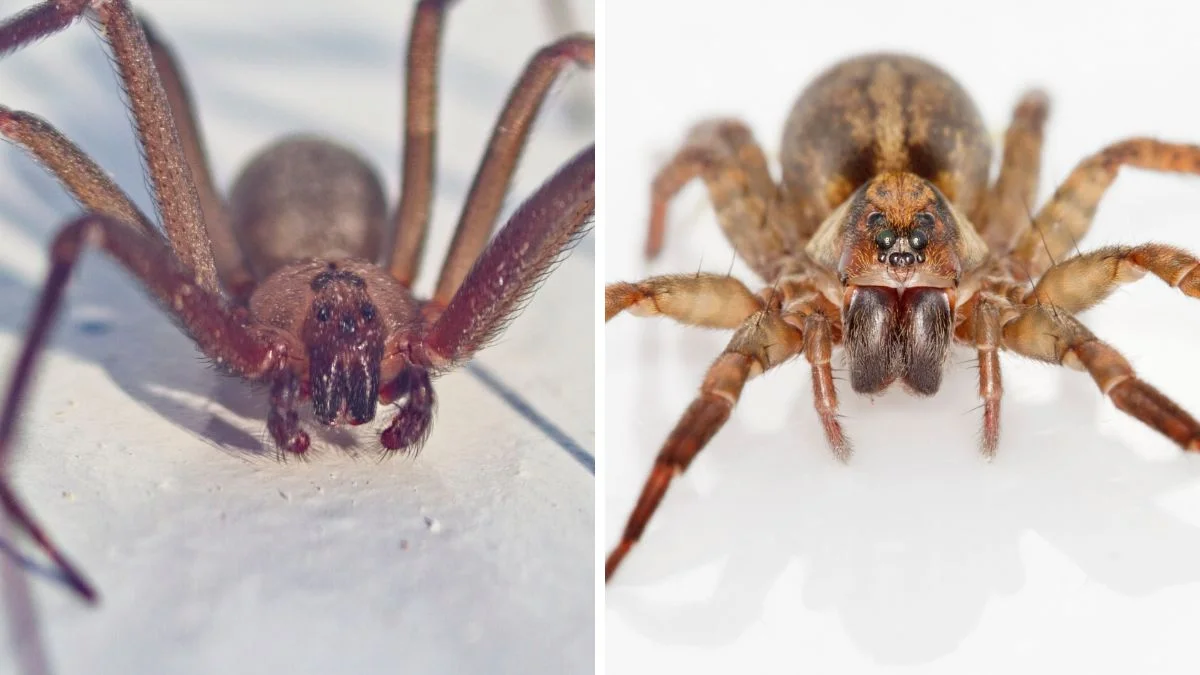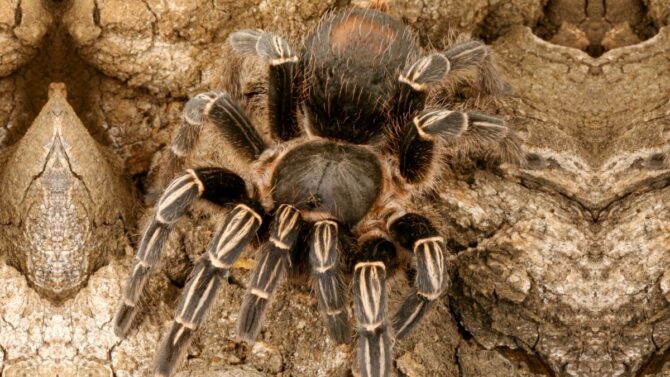Spiders are air-breeding eight-legged arachnids that belong to the Araneae order. It is a very common animal, even having a superhero named after it.
There are over 50,000 species currently in existence today, ranging from the tiny to the giant. These invertebrates aren’t going into extinction anytime soon, and you’ll be seeing them in your home for a long.
The spider is a close relative to the scorpion, the tick, and the mite, all of which are arachnids. It is the largest of its kind, and it tends to draw the most attention due to how easily it can be found.
We’ll be drawing out a profile of the eight-legged arachnid and provide a lot of much-needed information on it, including how to get rid of anyone that’s pestering your home.
Scientific Classification
- Kingdom: Animalia
- Phylum: Arthropoda
- Subphylum: Chelicerata
- Class: Arachnida
- Order: Araneae
- Suborders: Mesothelae, Opisthothelae
Characteristics
- Height: 0.02 to 3.5 inches
- Weight: 1mg to 175g
- Venom/Poison: Yes
- Habitat: Trees, shrubbery, human dwellings
- Range: Worldwide
- Diet: Carnivore
- Life span: 2 to 20 years
- Gestation Period: 2 to 3 weeks
- Conservation status: Least Concern
5 Interesting Facts About Spiders
1. Spiders don’t always have eight eyes
It is a popular belief that spiders have eight eyes, mainly because it has eight legs. Eight eyes also seem to be common amongst species.
However, there’s no uniform number of eyes this insect can have. It differs according to the species in question. Some have only six eyes, others have less than six.
There’s one quality common to all, however. They all have an even number of eyes. It isn’t possible for them to have three, five, or seven eyes. That would make them seem like cyclops.
2. There’s the largest known spider and the oldest spider
The largest species still in existence today is the huntsman spider. Also called giant crab spiders, the huntsman is considered the largest spider by leg span. It isn’t the largest by weight, though. That position belongs to the goliath bird eater.
Then there’s the oldest that has lived. It was a trapdoor spider that lived to be 43 years and would have kept on living if it hadn’t fallen prey to a predator.
3. Some children eat their mothers (you read that right)
This is known as matriphagy and it is common amongst many species. Matriphagy occurs when the child eats the mother usually in the first week, and this happens not just with spiders. It has been detected amongst insects and worms as well.
If this is your first time hearing this you may get confused as the reverse is what happens more (the mother eating the offspring).
Matriphagy is indeed rare, but it happens. An example of a species in which the young eat the old is the black lace weaver spider.
4. Some males want to be eaten
Besides matriphagy, females sometimes eat a male they are not interested in (more on this later). What’s rather strange here is the red widow species.
Here, the males seem to want to be eaten. They force themselves into the female’s mandibles for her to eat. If she refuses, he keeps trying till he eventually gets eaten.
This bizarre phenomenon increases the chances of survival for the species. Males that get eaten copulate for a longer period as they keep releasing sperm while she’s eating him. Self-sacrifice is sometimes necessary.
Not all males follow the footsteps of the red widow. Some do what they can to avoid being eaten. They tie up her legs, play dead and even massage her till she sleeps off.
5. They are masters of disguise
Spiders are good at disguising, and each one has a particular style it uses. Perhaps the most unique are those that take the form of ants.
They disguise themselves as insects and even have the same pheromones. It is said that over 100 species do these disguises.
Disguised individuals want to either avoid predators or prey on unsuspecting ants. This can work in both ways.
General Description
The variety makes it difficult to have an exact description, but we can look at the similarities they share.
They have eight legs, fangs, and spinnerets (though not all spin webs) differentiated by having more legs and different body parts. They also don’t move the same way as insects.
A case could be made for them resembling scorpions, their fellow arachnids. However, even there the difference is obvious. Spiders are unique arachnids.
The body is composed of two main parts: the cephalothorax and the abdomen. The former comprises the head and thorax on which you’ll find the eyes, mouth, and legs.
In the abdomen region, we have the spinneret, reproductive openings, and breathing organs. Some have large jaws, and their bodies are covered in exoskeletons.
Distribution and Habitat
Spiders have one of the widest ranges among animals, and you can find them everywhere in the world except Antarctica.
This is mainly because of their large number of species. Some of their main locations include:
- Africa
- Asia
- Europe
- The Americas
The spider inhabits different habitats too, which largely depends on the species in question. Some can be found in trees, others in the shrubbery, and then there are the underground dwellers.
They prefer rainforests, woodlands, wetlands, forests, grasslands, and deserts. This is for those that live in the wild.
Others stay in human dwellings, and you might find one in your home especially if you live in a warm environment. They inhabit barns, houses, farms, basements, attics, and more.
Diet
Most spiders are carnivores, and they have different ways of capturing their prey. Most spin webs and they use these webs as a trap for unsuspecting prey.
Others that don’t spin webs will either pursue the prey or lay an ambush and pounce on the victim.
Their chosen prey often depends on the size. The common spider species feed on insects like flies, mosquitoes, and other bugs.
This is considered an advantage as they prevent insect invasion in your home, reducing chances of getting an insect-related illness like malaria.
These arachnids aren’t limited to insects, however. They feed on worms, snails, small vertebrates like frogs, and smaller birds. Some species even eat snakes, and they can feed on other spiders.
Reproduction and Mating Process
The bulk of the reproductive work falls on the male, and for some individuals, mating could be the last thing they do. The goal of each male is to find a female before other males, and the competition is strong.
The first challenge he faces is finding the right female. Spiders don’t form groups during the breeding season as some other animals do, and because of their solitary lifestyle, the male has to go on an adventure to seek the right female.
He achieves this by tracking down her pheromones, which she leaves on a silk thread. Using chemical sensors on the front legs, the male follows the thread. Some females leave pheromones on their webs for the same reason.
Some males try to sabotage the chances for other females by cutting the webs in the latter place, then some follow a female that’s not sexually mature so they can be the first. Some male species also fight for the female.
The next step is courtship, which is another trying moment for the male. Being smaller than the female, the male has to first establish that it is of the same species and not prey. This would stop the female from pouncing on it at first sight.
Courtship can be done with webs for species that spin. Others that don’t spin use dances to court the female. It’s up to the female to accept or decline.
If she declines she could either crawl away, shake her web, or even eat the male if he desperately tries to continue.
If she accepts, they proceed to the mating stage.
Predators and Threats
Generally, animals that prey on insects also go after spiders, especially the smaller ones. Frogs, birds, and lizards are top predators of the arachnid. Lizards in particular are incompatible with them, according to a study done on the subject.
Spiders also prey on themselves, as we saw above. Bigger ones will feed on smaller species when given the chance, and some will even eat members of their species.
Other predators are fish, snakes, shrews, bats, toads, scorpions, spider wasps, and tarantula hawks.
Behavior
Spinning web is the first behavior often associated with spiders, but it is not universal. The wolf spider is one species do not spin webs but survives enough without them.
Web-building spiders do not have strong eyesight, regardless of their number of eyes. They use vibrations from their webs to explore the environment.
We hinted at camouflage in the previous section, and we want to repeat it here as it is a common behavior amongst spiders. Coloration is one form of camouflage.
Some spiders have colors that can either blend with the environment or confuse the predator. Venomous spiders tend to have brighter colors to scare away predators.
Then we have the species that camouflage as ants when hiding from a predator. This tactic wouldn’t work on a predator that feeds on both insects and spiders, but it is effective.
Some spiders defend by going on the offensive. An example is a tarantula that throws hair at the predators. The hairs are not considered venomous, but they can irritate the skin.
Many spider species are solitary, hunting and living on their own. However, some species deviate from this norm by forming some social groups. The groups aren’t as complex as that of bees, but they make things work.
Not all spider species are venomous, but many are. The brown recluse and black widow are examples of spiders that are considered very dangerous.
These spiders can sometimes be found in the human residence, so you should know how to get rid of invading spiders in your home.
However, this doesn’t mean you should kill them. There are more humane ways to remove them, which include:
- Set spider traps.
- Remove all webs from your walls.
- Use vinegar or peppermint oil.
- Use a spider catcher.
- Store your belongings in airtight containers rather than cardboard boxes.
Male vs Female
The female spider is noticeably bigger than the male, and that’s why she can eat him up after mating. That said, it isn’t always easy to detect the difference between sexes, especially that of smaller spiders.
In some cases, knowing the difference isn’t important. But when you have a species with a more aggressive gender, you should know the difference.
Besides the size, you can tell the difference in sexes by the colors. The black widow is a good example of a species where both sexes have different colors.
The female is black, while the male is lighter in color with a combination of red-orange, yellow and brown.
Frequently Asked Questions
Are spiders dangerous?
Not all spiders are harmful. Some are without venom and do not cause humans any harm. However, there are spider species that will cause harm to humans. These are venomous and should be avoided at all costs. Fortunately, venomous spider species are not aggressive and won’t attack unless threatened.
Have some spiders gone extinct?
There are a lot of spider species still existing today, over 50,000 in all. However, some species have gone extinct. These were very old spiders that were believed to have existed millions of years ago.
Can spiders be pets?
Spiders can be pets, especially docile arachnids. However, they do not bond with humans like dogs and cats. Spiders can only identify who feeds them, but that’s the highest bonding moment they can have.
Do people eat spiders?
Spiders aren’t usual delicacies in the United States, but in some other countries, spiders are a part of people’s diet.
Are spiders deadlier than snakes?
Spiders are more widespread than snakes, but the fatal rate of snakes is more. We can therefore conclude that, though it’s easier to get bit by a spider, snakes are deadlier.
Conclusion
Spiders are known for their shape, several legs, and eyes. They can be good pets for those who want them, but usually, these arachnids prefer going wild and free.
When in doubt, do not pick or touch a spider with bare hands. You may not know if it is venomous or not.

